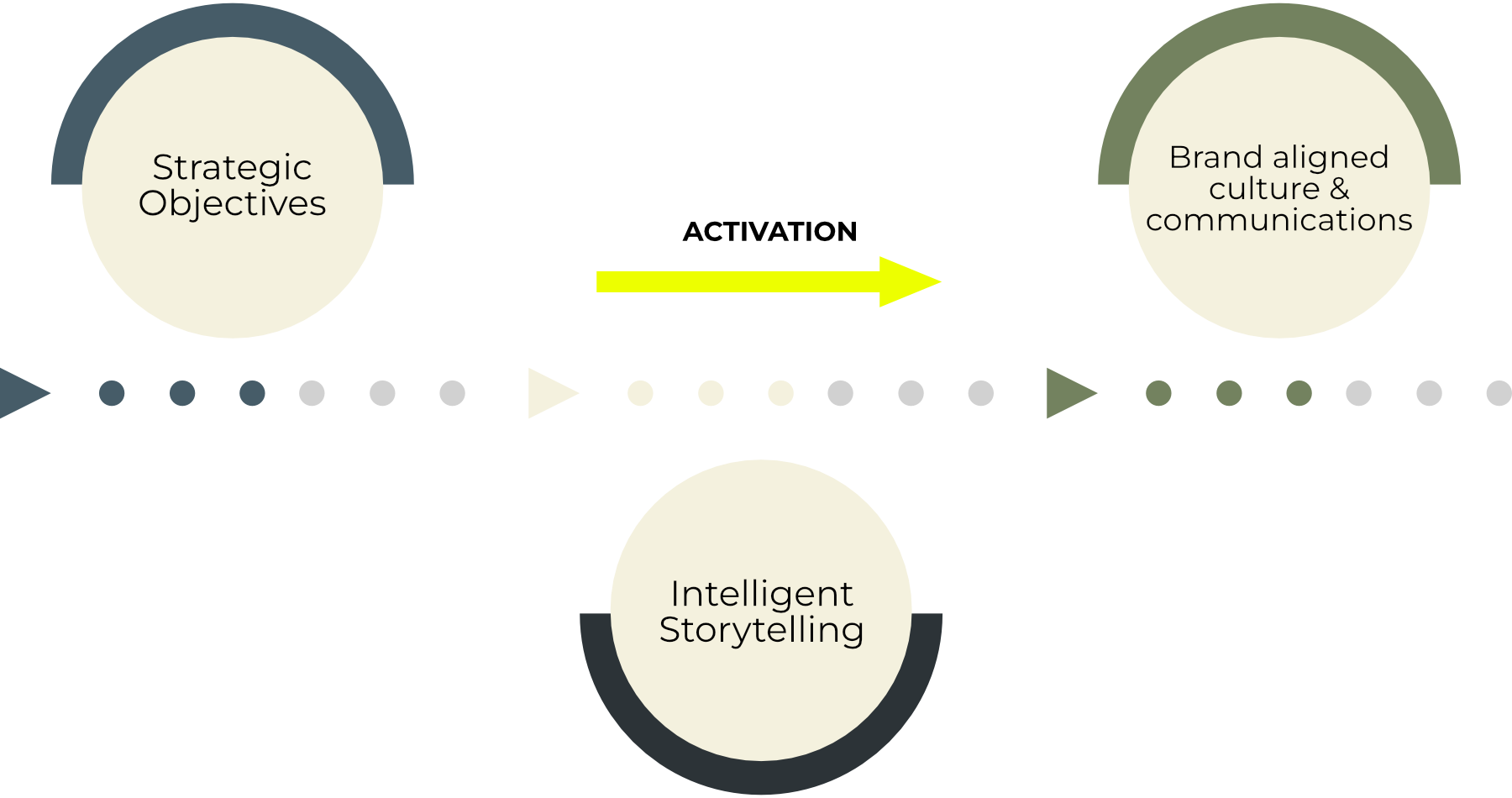What is intelligent storytelling?
Your organisation’s story should be one of its most powerful assets.
It should run through your culture, your service delivery, your product development and marketing – guiding the ways you work, and acting as a beacon to customers and team members.
We work with you and your teams to identify your story, codify it into intelligent frameworks and tools – and deploy it throughout your organisation.
This embeds your story in the way that everyone works, so that it becomes a unifying force. It empowers your teams to speak the same language, pull in the same direction and focus efforts on widely understood strategic objectives.
And because your people use your story to frame their planning and communication every day, it becomes the key mechanism for aligning and deepening your culture.
Talk to us about harnessing your story to achieve intelligent results.

Launching new services, acquiring new entities, hiring teams, becoming more diverse and sustainable – or transforming any area of your operations – requires precise, rational thinking. But rational thinking alone often fails to achieve change.
This is because human beings can make sense of huge volumes of information – often without thinking about it much at all.
An important element of this is our ability to identify patterns and infer meaning from them. Often these pattern-recognising abilities serve us well – allowing our brains to make fast assumptions that keep us safe. But sometimes, this ability becomes a barrier to accepting new ideas that don’t conform to learned patterns.
Story hacks through this, creating space for new approaches to be recognised, embraced and shared.
Intelligent storytelling codifies rational strategy into emotionally resonant narrative elements. When they’re deployed in your organisation, they create space in people’s minds for new visions, ideas and ways of working. Story is the connecting piece – making complex, abstract concepts feel tangible, achievable and ownable.
Intelligent storytelling leverages a resource your organisation already has – language. It creates frameworks around position, message and voice so that your organisation consistently conveys a story that underpins and drives strategic objectives.
Key advantages include:
- It works across disciplines, teams and geographies
- Your teams communicate on a daily basis – which means there’s frequent reinforcement of your story
- You’re using a resource you already have and that everyone is capable of adopting and adapting
- Great storytelling has the potential to make change go viral – enhancing adoption of new approaches, productivity and reputation
“Great stories happen to those who can tell them.”
American public radio host, producer and author
Discuss your challenges

Beaufort House
Llechryd
NP22 5QG
